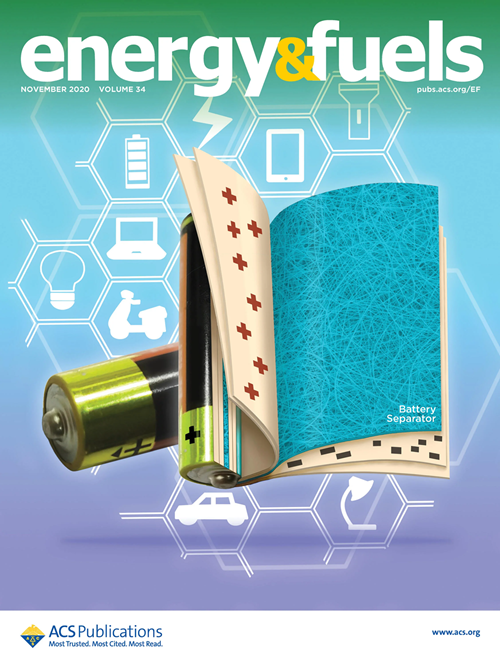动脉淋巴样内皮细胞出现在遗传性出血性远端血管扩张症 2 中并导致血管渗漏和动静脉畸形
IF 5.2
3区 工程技术
Q2 ENERGY & FUELS
引用次数: 0
摘要
背景动静脉畸形(AVM)是遗传性出血性毛细血管扩张症的特征。方法通过内皮细胞特异性缺失 Alk1、内皮细胞系追踪、单细胞转录组学分析和电子显微镜,研究了内皮细胞特异性缺失 Alk1 后 ALK1 缺失的内皮细胞(ECs)的血管表型和特征。缺血试验用于检测细胞的血管畸形能力。连通性图谱与转录组分析被用于鉴定化合物。我们在小鼠体内进行了 Alk1 的内皮特异性缺失,发现了严重的动静脉畸形和血管渗漏。单细胞转录组学分析表明,删除 Alk1 后形成了一个新的独特细胞集群,其中的细胞共同表达动脉和淋巴内皮标志物。分析预测,这些细胞可能来自于 Alk1 缺失后的动脉 EC。根据其细胞标记,这一新群体被称为动脉-淋巴样 ECs,其在 Alk1 基因缺失后的肺小动脉中的出现得到了验证。移植这些细胞会导致血管畸形。内皮系谱追踪证实,这些新的动脉淋巴样 ECs 来自于 ALK1 缺失的 ECs,可能是动脉 ECs。我们发现,SOX17(SRY-box 转录因子 17)诱导是这些动脉淋巴样 ECs 衍生的原因。我们发现,Sox17 需要与 MDM2(小鼠双分化因子 2)直接结合才能发挥这一作用。总之,我们的研究揭示了 ALK1 信号调节内皮表型的机制基础,并为出血性毛细血管扩张症 2 型的新治疗策略提供了可能性。本文章由计算机程序翻译,如有差异,请以英文原文为准。
Arterial-Lymphatic-Like Endothelial Cells Appear in Hereditary Hemorrhagic Telangiectasia 2 and Contribute to Vascular Leakage and Arteriovenous Malformations.
BACKGROUND
Arteriovenous malformations (AVMs) are characteristic of hereditary hemorrhagic telangiectasia. Loss-of-function mutations in the activin receptor-like kinase 1 (Alk1) are linked to hemorrhagic telangiectasia type 2.
METHODS
Endothelial-specific deletion of Alk1, endothelial lineage tracing, transcriptomics of single-cell analysis, and electron microscopy were performed to examine the vascular phenotype and characteristics of ALK1-deficient endothelial cells (ECs) after EC-specific Alk1 deletion. Ischemia assays were used to examine the cell capacity for vascular malformation. Connectivity Map with transcriptomic analysis was applied to identify chemical compounds. Specific methods for arteriovenous malformations, such as micro-computed tomography, with other molecular and cell biological tools were also performed.
RESULTS
We performed endothelial-specific deletion of Alk1 in mice and found severe arteriovenous malformations and vascular leakage. The transcriptomics of single-cell analysis revealed a new distinctive cell cluster formed after Alk1 deletion where the cells coexpressed arterial and lymphatic endothelial markers. The analysis projected that these cells potentially originated from arterial ECs after Alk1 deletion. This new population was referred to as arterial-lymphatic-like ECs according to its cellular markers, and its appearance was validated in the pulmonary small arteries after Alk1 deletion. Transplantation of these cells caused vascular malformations. Endothelial lineage tracing confirmed that these new arterial-lymphatic-like ECs were derived from ALK1 depleted ECs, potentially arterial ECs. We discovered that SOX17 (SRY-box transcription factor 17) induction was responsible for the derivation of these arterial-lymphatic-like ECs. We showed that direct binding of MDM2 (mouse double minute 2) was required for Sox17 to execute this activity. Inhibition of MDM2 reduced the arteriovenous malformations in the mouse model.
CONCLUSIONS
Together, our studies revealed the mechanistic underpinnings of ALK1 signaling in regulating the endothelial phenotype and provided possibilities for new therapeutic strategies in hemorrhagic telangiectasia type 2.
求助全文
通过发布文献求助,成功后即可免费获取论文全文。
去求助
来源期刊

Energy & Fuels
工程技术-工程:化工
CiteScore
9.20
自引率
13.20%
发文量
1101
审稿时长
2.1 months
期刊介绍:
Energy & Fuels publishes reports of research in the technical area defined by the intersection of the disciplines of chemistry and chemical engineering and the application domain of non-nuclear energy and fuels. This includes research directed at the formation of, exploration for, and production of fossil fuels and biomass; the properties and structure or molecular composition of both raw fuels and refined products; the chemistry involved in the processing and utilization of fuels; fuel cells and their applications; and the analytical and instrumental techniques used in investigations of the foregoing areas.
 求助内容:
求助内容: 应助结果提醒方式:
应助结果提醒方式:


